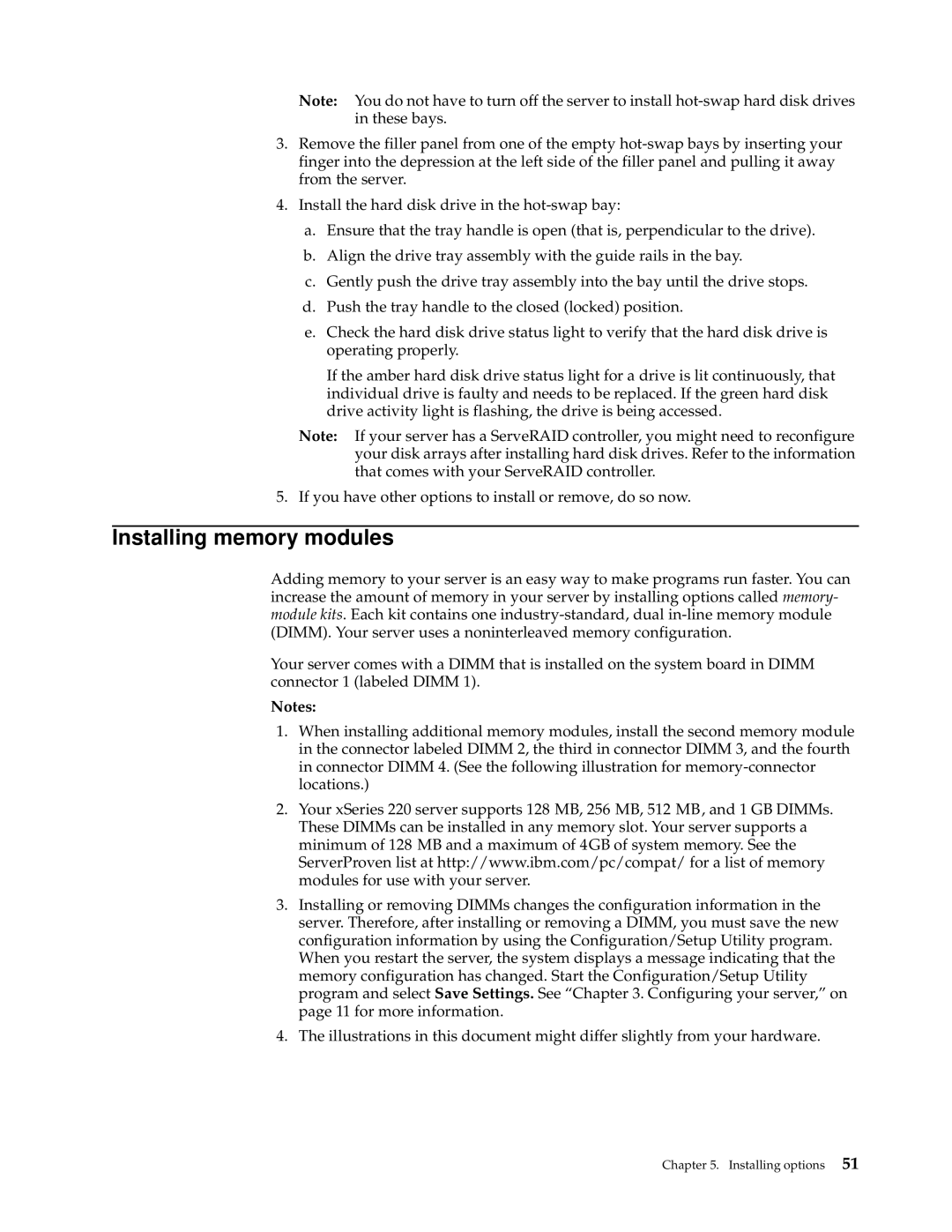Note: You do not have to turn off the server to install
3.Remove the filler panel from one of the empty
4.Install the hard disk drive in the
a.Ensure that the tray handle is open (that is, perpendicular to the drive).
b.Align the drive tray assembly with the guide rails in the bay.
c.Gently push the drive tray assembly into the bay until the drive stops.
d.Push the tray handle to the closed (locked) position.
e.Check the hard disk drive status light to verify that the hard disk drive is operating properly.
If the amber hard disk drive status light for a drive is lit continuously, that individual drive is faulty and needs to be replaced. If the green hard disk drive activity light is flashing, the drive is being accessed.
Note: If your server has a ServeRAID controller, you might need to reconfigure your disk arrays after installing hard disk drives. Refer to the information that comes with your ServeRAID controller.
5. If you have other options to install or remove, do so now.
Installing memory modules
Adding memory to your server is an easy way to make programs run faster. You can increase the amount of memory in your server by installing options called memory- module kits. Each kit contains one
Your server comes with a DIMM that is installed on the system board in DIMM connector 1 (labeled DIMM 1).
Notes:
1.When installing additional memory modules, install the second memory module in the connector labeled DIMM 2, the third in connector DIMM 3, and the fourth in connector DIMM 4. (See the following illustration for
2.Your xSeries 220 server supports 128 MB, 256 MB, 512 MB, and 1 GB DIMMs. These DIMMs can be installed in any memory slot. Your server supports a minimum of 128 MB and a maximum of 4GB of system memory. See the ServerProven list at http://www.ibm.com/pc/compat/ for a list of memory modules for use with your server.
3.Installing or removing DIMMs changes the configuration information in the server. Therefore, after installing or removing a DIMM, you must save the new configuration information by using the Configuration/Setup Utility program. When you restart the server, the system displays a message indicating that the memory configuration has changed. Start the Configuration/Setup Utility program and select Save Settings. See “Chapter 3. Configuring your server,” on page 11 for more information.
4.The illustrations in this document might differ slightly from your hardware.
